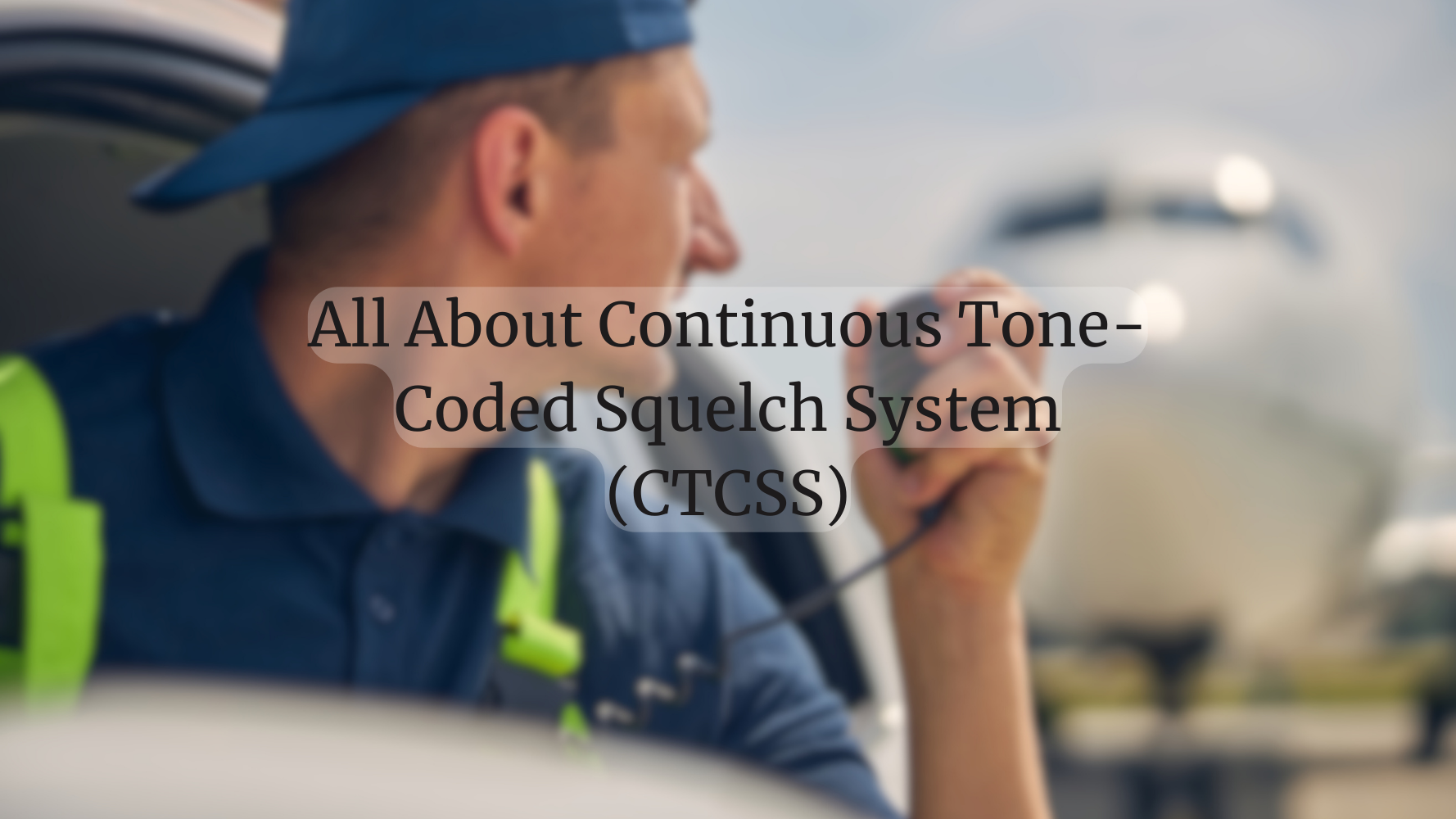What is CTCSS DCS codes?
Continuous Tone-Coded Squelch System or CTCSS is a function on a two-way radio that, as the name suggests, squelches, or quiets the radio until a tone code is received. In other terms, the radio speaker will stay mute and ignore calls from parties that are on your channel unless they have the same tone code as you. Any transmissions without the same code will still be received by the radio but not heard over the speaker.
Other names for CTCSS codes are Private Line (Motorola), Channel Guard (Ericsson), Call Guard (E.F. Johnson), Quiet Channel (RCA), or Privacy Codes but the most proper term is CTCSS.
One of the top disadvantages of two-way radios is the possibility of interference or listening to transmissions outside of your team. CTCSS targets this problem and is used to reduce cross talk across shared channels.
In more technical terms, Continuous tone-coded squelch systems are “a set of sub-audible tones that act as filters to eliminate interference from unwanted transmissions originated by other individuals or groups who are operating on the same channel or frequency”. The tones are transmitted at 300 Hz which is why they are considered “sub-audible” rather than inaudible.
How it Works
As an example, we have ABC Construction Company. Some radios in their organization have X squelch tone/code while other radios have Y squelch tone/code. When a radio with an X squelch code transmits all the X radios will open squelch and hear radio transmissions. All the radios with the Y squelch code remain quiet.
The radio will only open squelch if the tone is detected. Your radio must have a matching CTCSS tone to hear a call. This is a function used to reject undesired signals on your channel. Because you need the same code to hear a transmission it may sound like your communication is private; however, this is not the case.
Other parties can have the same tone or code because there are limited options so they can hear your call. Unfortunately, this overlap means communication privacy is not guaranteed. CTCSS does still minimize hearing unnecessary or unrelated transmissions. Therefore, this function is great for constructions crews, manufacturers, airport maintenance, plumbers, electricians, and other occupations that use two-way radios without discussing sensitive information.
Chart of the Standard CTCSS Tones

(Chart from buytwowayradios.com)
How Does CTCSS Compare to Encryption?
Encryption is another function on a two-way radio that is almost similar to CTCSS. In a way both functions act as communication filters.
Encryption is more complex than CTCSS. In simpler terms, encryption blocks outsiders from listening in on important radio communication while CTCSS is used to keep users within the organization from hearing each other’s radio communication. Encryption is used with public safety radios to avoid sensitive information from being heard by unauthorized personnel.
Encryption uses a cipher to encode radio transmissions to sound like random noise. The only way to listen to encrypted radio transmissions is by having proper encryption keys and decoding equipment.
With CTCSS, the only way to hear radio transmissions is if the radio is set up with the same tone code.
You can think of CTCSS as providing more of an organization of communication and encryption provides security of communication.
What the Difference Between CTCSS and DCS Privacy Codes?
CTCSS and DCS are similar concepts because they are both privacy codes. DCS stands for digitally coded squelch and is the updated version of CTCSS. DCS sends a number repeatedly encoded in digital as you speak. The number is repeated in low frequencies, so it is close to inaudible.
CTCSS is the original version of this technology because it was developed for analog. As more digital radios were made, DCS was developed so the same technology can be used on digital radios.
The muting and unmuting functionality of CTCSS is the same as DCS—when radios have matching codes transmission is heard and when the codes are different or DCS is turned off all transmissions are heard. Although DCS is still not permanently private—like CTCSS—it does have more codes which lowers the chance of picking the same code as other radio users that are not on your team.
Overall, CTCSS and DCS are very similar, the biggest difference is the number of codes available. Below is a chart of the DCS codes available to understand the numerical differences.


(Chart from buytwowayradios.com)
Conclusion
CTCSS and DCS codes are used to keep radio communication from overlapping. It’s incredibly useful for companies who have large talk groups to make sure only relevant information is heard and only the right people hear it. This keeps two-way radio communication clear across channels. We hope we have provided the necessary information to give you a deeper understanding of CTCSS.

